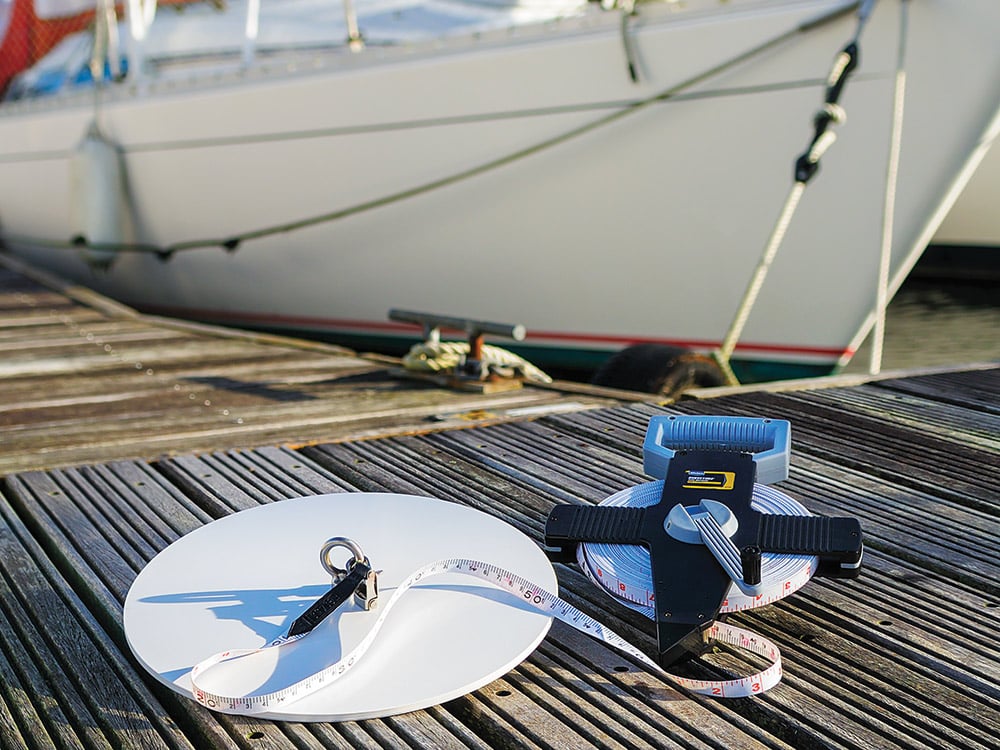
Sailor, adventurer and citizen science advocate Matt Rutherford has a line he likes to use when talking about the adventures he and shipmate Nicole Trenholm have had, sailing many thousands of salty miles to collect data on plastic debris and other assaults on Mother Ocean: “No one can do everything, but everyone can do something.”
Their efforts have included numerous trips aboard the 42-foot steel schooner Ault in which they’ve traced lengthy circles in the Atlantic and spent months collecting data from remote fjords and bays above the Arctic Circle. One year, they sailed a Harbor 29 from California to Japan to troll for plastics.
All of us, as Matt says, may be able to do something, but probably not that.
Thankfully, though, there are ways mere mortals can help forward the cause of science and stewardship of this planet we call home.
In 2013, the Secchi Disk Seafarer Project caught my eye when organizer Richard Kirby contacted Cruising World hoping to drum up volunteers to help collect data on the concentration of phytoplankton in the open ocean.
Phytoplankton, which accounts for half of Earth’s photosynthesis, grows and lives near the sea’s surface and forms the foundation of the marine food chain. The organisms breathe carbon dioxide and help provide the world with clean fresh oxygen, so they are a key component of the global carbon cycle. Living near the surface, they are also quite sensitive to environmental variations, so it only makes sense to monitor what’s going on where water meets sky.
And that’s where ordinary sailors come in. To assist Richard and his colleagues, all you had to do was build your own Secchi disk, a device first developed in 1865. The disk, made from wood, plastic or metal, needs to be 30 mm wide and painted matte white. It requires enough weight attached to the bottom to sink and either a long surveyor’s tape measure or 50-meter rope marked off in 20-centimeter intervals attached to its topside. To use it, once you’re offshore, stop your boat, lower the disk until it disappears and then enter the data — depth, location, water temp (if available) and any notes — into the Secchi app on your phone. Once you’re back home and connected to the internet, your data is uploaded and added to Seafarer’s database. Simple, huh?
Now, with four years’ worth of data collected, Richard and his colleagues have published their first paper, and it turns out, everyday sailors and their homemade disks have had an impact. (You can read the entire abstract at cruisingworld.com/0318secchi.)
“Our results show seafarers collect useful Secchi disk measurementsof ocean transparency that could help future assessments of climate-induced changes in the phytoplankton when used to extend historical Secchi disk data,” they write.
In the report, they cite a 100-year study of phytoplankton concentrations in which researchers identi ed a 40 percent decline since 1950 — a chilling thought, though of course there’s an asterisk attached: Data over the past century was collected in two different ways.
For the first 50 years, scientists primarily used disks to determine the density of plankton, but in the modern era, they have relied more heavily on satellite observations to extrapolate their numbers, and critics cried foul over drawing conclusions using two very different methods. It turns out satellite images can cover large areas but have limitations when it comes to gauging varying densities throughout a given water column and in different lighting conditions.
“The only way to assess long-term global ocean phytoplankton change in the water column from the beginning of the 20th century, without combining different types of data, is to increase present-day Secchi disk transparency measurements,” the Seafarer team concludes. And while there is no shortage of marine biologists, few actually go to sea, fewer still venture far offshore and those who do are typically aboard research vessels that seldom visit the same place twice.
“In contrast,” they continued, “the public go to sea regularly for recreation or work and often to a similar place, and ocean passages sailed by cruisers follow similar routes dictated by the time of year and favorable prevailing winds.” Data collected by sailors, then, not only provides basic observations but also continuity in where and how the data is collected overtime. Volunteer efforts will also help researchers better understand and refine the satellite-based estimates they develop.
In an email, Richard raised yet another reason to join the Secchi crowd: “A secondary, but equally important, goal of the study is to engage people with the marine environment. The more people that are engaged, the more we will care about it, and also the more quickly we will notice changes.”
There you have it: another good reason to go sailing.








